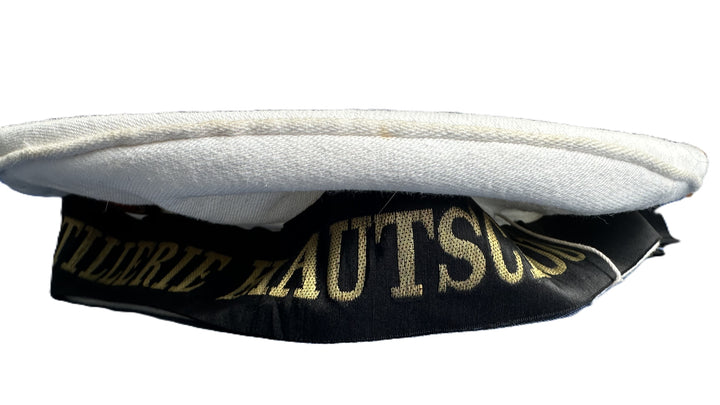German Enlisted Man's Cap from Kiautschou Naval Artillery, China (Matrosenartillerie Kiautschou)
- Regular price
- $2,495.00
- Sale price
- $2,495.00
- Regular price
SKU: 33-464
This rare and significant artifact is a German Enlisted Man’s cap (Mutze) from the colonial German Matrosenartillerie forces stationed in Kiautschou Bay, a German-controlled territory in China from 1898 until the outbreak of World War I in 1914. The cap, used by naval artillery units defending Germany's colony in the Far East, embodies a fascinating period of Imperial German colonial expansion and the naval protection of strategic overseas possessions.
Historical Context: Kiautschou Bay and the German Presence in China
Kiautschou Bay was leased to Germany in 1898 as part of a treaty with the Qing Dynasty, following Germany's growing imperial ambitions during the age of European colonialism. Situated on the northeastern coast of China in the Shandong Peninsula, Kiautschou Bay was developed into the colonial capital Tsingtau (modern-day Qingdao), which became an important German naval base and commercial hub.
Tsingtau quickly turned into a highly developed and fortified settlement, with German authorities modernizing the area with infrastructure, schools, and a railway system, while maintaining a formidable military and naval presence. The Matrosenartillerie was a key defensive unit, responsible for protecting the port from potential threats, particularly during the rise of tensions in the early 20th century. This military presence became crucial when Japan, allied with Britain, attacked and seized the colony in 1914 during World War I.
Description of the Cap:
- Material: The cap is made from durable, white cotton, designed for summer or tropical use, and adorned with a black tally band featuring the gold inscription "Matrosenartillerie Kiautschou." This inscription proudly denotes the sailor’s unit, a rare connection to Germany’s overseas military presence in the Far East.
- Cockade: A prominent Imperial German cockade featuring the red, white, and black national colors is positioned at the front, a symbol of loyalty to the Kaiser.
- Interior: The interior is lined with fabric, showing wear consistent with its age and use.
Condition:
The cap remains in good condition, with minor wear and some light staining due to age. The lettering on the tally band is well-preserved, and the cockade remains securely affixed, making it an excellent representation of its time period.
Significance and Rarity:
This cap is a highly sought-after collector’s item due to its connection with Imperial Germany's naval operations in China, representing a brief yet intriguing chapter of German colonial history. The fall of Kiautschou in 1914 marked the end of German imperial ambitions in Asia, making items from this era especially rare.
Pricing:
Considering the rarity, historical significance, and condition of this piece, it is valued at $2,495. Similar items from Germany’s colonies and naval forces command high prices due to their scarcity and the detailed craftsmanship that went into their production.
Conclusion:
This German enlisted man’s naval cap offers a unique glimpse into the history of Germany’s colonial empire and its military presence in China. It is an essential addition for collectors of German militaria or those fascinated by the global impacts of European imperialism in the late 19th and early 20th centuries.
Additional Resources:
- Learn more about the history of the German colonial empire in Asia: The German Colonial Experience.
- Explore the legacy of Tsingtau and the German influence on Qingdao: Qingdao’s German Legacy.













